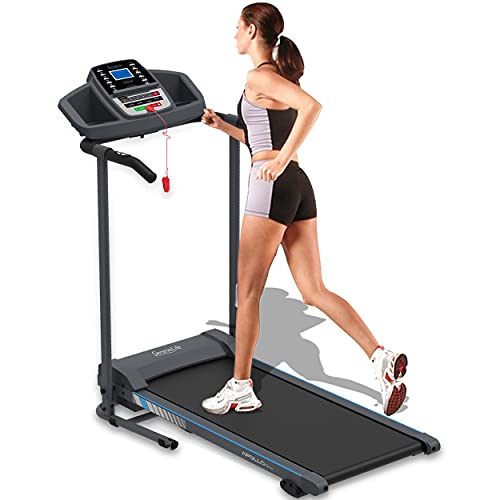The Benefits of Using a Treadmill for Walking: Your Ultimate Guide
In an era where inactive way of lives have ended up being more common, finding methods to integrate exercise can significantly benefit overall health. Walking, considered one of the most available kinds of workout, provides a myriad of health advantages. Integrating this with a treadmill can make it even easier for individuals to keep a routine walking routine, despite the weather condition exterior. This post will look into the benefits of using a treadmill for walking, compare numerous types, and answer some regularly asked questions-- all intended to assist readers make informed decisions.
The Advantages of Walking on a Treadmill
1. Convenience and Accessibility
One of the most significant advantages of a treadmill is the benefit it provides. With one in your house, there is no requirement to venture out in harsh weather condition or discover a safe walking path.
2. Controlled Environment
Treadmills provide a controlled walking environment that allows users to set their speed, incline, and duration. This ensures a customized exercise that fulfills individual physical fitness objectives and requirements.
3. Low-Impact Exercise
Compared to running or running, walking is a low-impact workout that is simpler on the joints. Treadmills typically have actually cushioned belts to even more minimize impact tension.
4. Health Benefits
Walking has many health advantages, including improved cardiovascular health, enhanced mood, better weight management, and increased durability. Including routine walking on a treadmill can enhance these benefits.
5. Multi-tasking Opportunities
While walking on a treadmill, it's possible to engage in other activities such as reading, seeing tv, or listening to music. This makes workouts more pleasurable and can encourage consistency.
6. Danger Removal
Utilizing a treadmill removes hazards connected with outdoor walking, such as irregular surface, traffic, and other ecological dangers.
Kinds of Treadmills: A Comparison Table
Picking the ideal treadmill can substantially affect the walking experience. Below is a comparison table of various types:
| Treadmill Type | Description | Pros | Cons |
|---|---|---|---|
| Manual Treadmills | Requires physical effort to move the belt. | Generally less expensive; no electricity required. | No automatic incline or speed adjustments. |
| Electric Treadmills | Powered by electricity; adjustable speeds and inclines. | Versatile; easy to use; typically consists of additional features. | Can be more costly; needs an outlet. |
| Folding Treadmills | Designed for simple storage and saving area. | Space-efficient; practical for home usage. | May have a smaller sized running surface. |
| Industrial Treadmills | Much heavier, developed for regular use in health clubs. | Durable; frequently loaded with functions and programs. | Can be extremely pricey. |
How to Get Started with Walking on a Treadmill
If you're new to walking on a treadmill, consider the following steps to produce a safe and effective routine:
Step 1: Set Your Goals
Identify your walking goals, whether they are weight-loss, enhanced endurance, or just an increased day-to-day activity level.
Action 2: Learn the Controls
Familiarize yourself with the treadmill's control panel. Understand how to adjust listen to this podcast , incline, and how to use any additional functions it might have (heart rate screen, workout programs, and so on).
Step 3: Warm-Up
Start each walking session with a 5-minute warm-up at a slower speed to avoid injury.
Step 4: Start Slow
Start with low-intensity walking sessions two to three times a week, slowly increasing your duration and strength.
Step 5: Incorporate Incline
As your fitness enhances, think about integrating an incline into your regular to increase intensity and work different muscle groups.
Action 6: Cool Down
Conclude your workout with a 5-minute cool-down at a slower rate to help your body recover.
Often Asked Questions (FAQs)
1. For how long should I stroll on a treadmill for health benefits?
The CDC advises at least 150 minutes of moderate aerobic activity, like brisk walking, every week. This equates to about 30 minutes a day, five times a week.
2. Is walking on a treadmill much better than walking outdoors?
Both deal advantages, but a treadmill permits a controlled environment, which might match some individuals much better, particularly in varying climate condition.
3. Can I slim down by walking on a treadmill?
Yes, walking can add to weight reduction when integrated with a healthy diet plan. It's necessary to preserve consistency and gradually increase strength.
4. What speed should I walk on a treadmill?
For beginners, a speed of 3-4 mph is thought about a vigorous walk. As endurance enhances, individuals can change their speed according to their physical fitness goals.
5. How can I remain inspired while walking on a treadmill?
Listening to music, seeing TV programs, or even signing up with virtual walking communities can assist keep inspiration levels high.
Integrating a treadmill into a walking regimen can supply tremendous advantages, making workout accessible and reliable. With many kinds of treadmills offered, people can select one that best fits their requirements and preferences. By setting reasonable objectives and planning routine workouts, users can experience the myriad health benefits that feature walking. Remember to listen to your body, consider a mix of slopes and speeds, and most notably, enjoy the procedure. Walking on a treadmill is not just workout; it's a step towards a healthier lifestyle.

